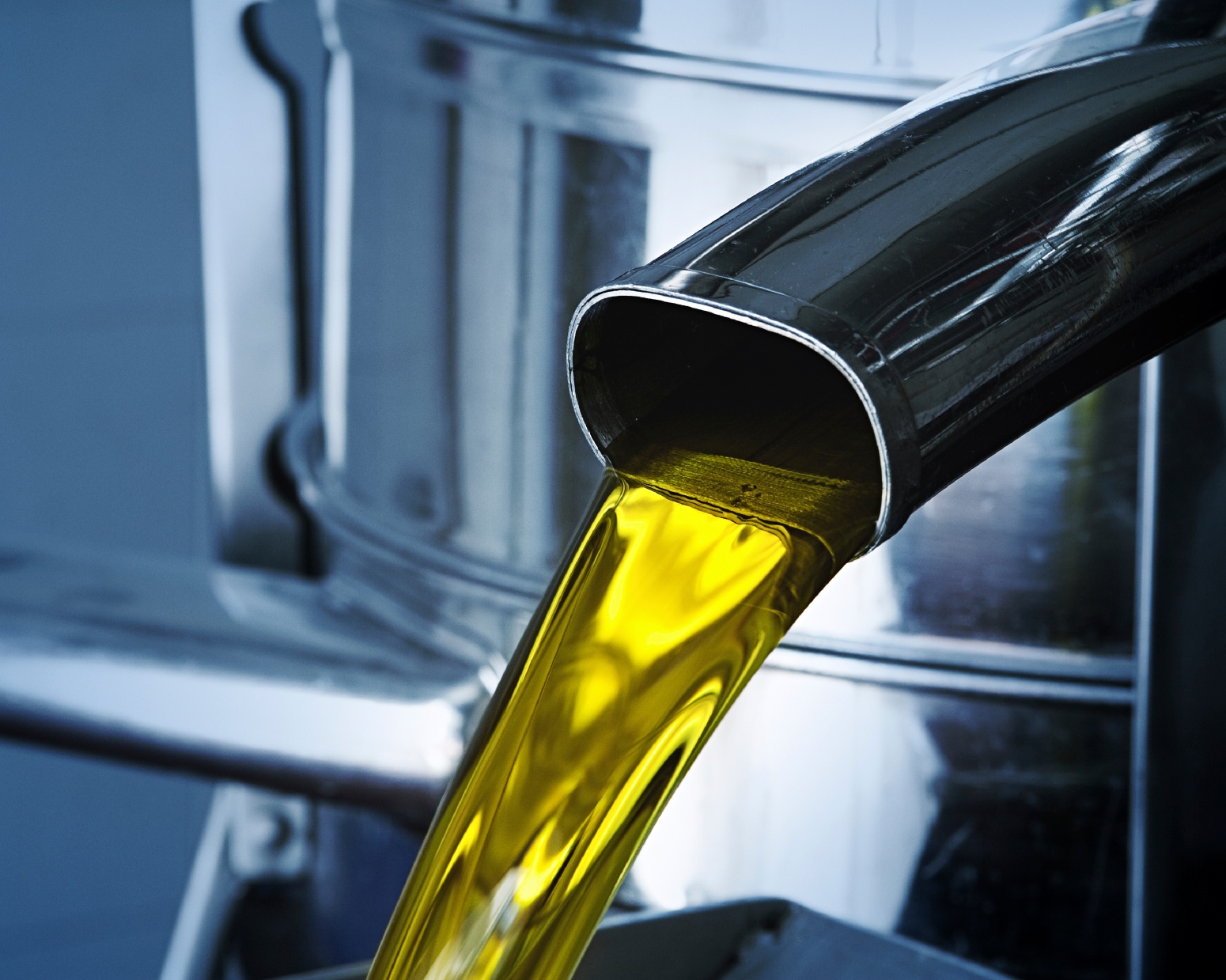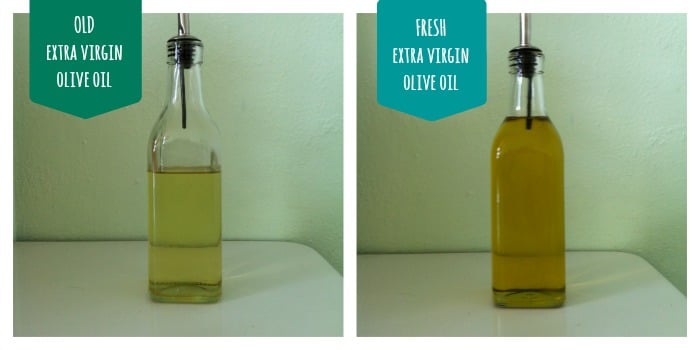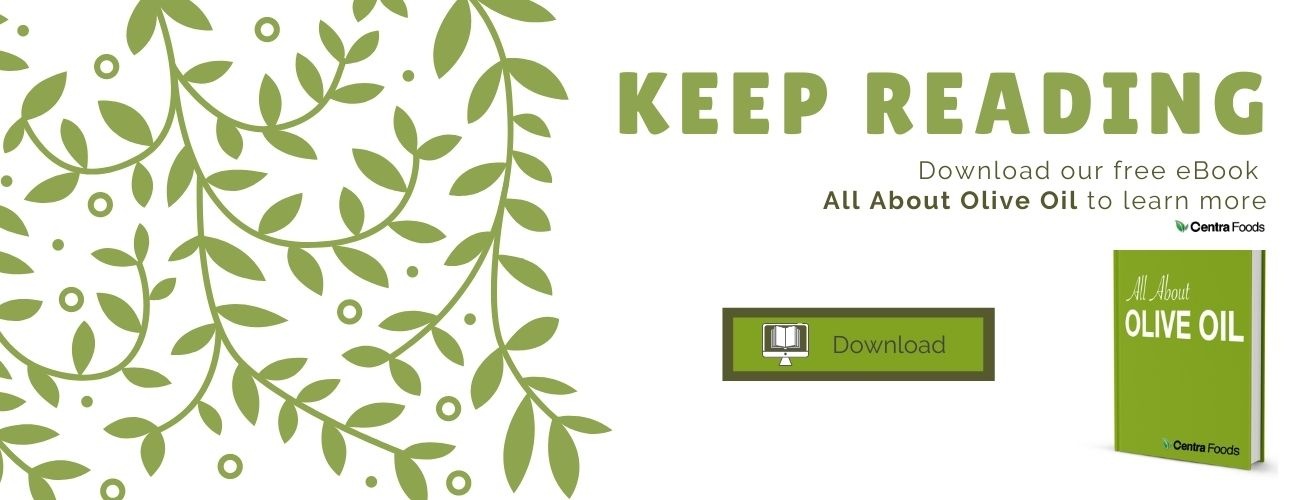We talk a lot about the different grades of olive oil: how they’re made, what they’re used for. But, it’s been a while since we talked about Organic Extra Virgin Olive Oil in particular. Sometimes, organic EVOO seems so straight forward that it’s easy to glance over.
This week, I’d like to bring it back to this classic, premium (and my personal favorite) oil. Here’s some basics about Organic Extra Virgin Olive Oil that you should know.
1. It’s Basically Olive Fruit Juice
Organic Extra Virgin Olive Oil is produced very simply. The same applies to regular Extra Virgin Olive Oil, because these grades are produced in the same way — the only difference is how the olives are grown.
To make Extra Virgin Olive Oil, you simply grind the olives into a paste and press (or spin, using a centrifuge) that paste to extract the liquid from the olives: one part of that liquid is water, and the other part is oil.
That’s it! There’s no further refining or processing that’s done to the oil. Given that olives are technically a fruit, this makes producing EVOO as straightforward as fresh squeezed fruit juice.

2. Color and Flavor Varies Widely
Since the oil really is just a fresh fruit juice with no processing involved, the characteristics of the oil (like what color it is and what it tastes like) is highly affected by the characteristics of the olives it’s made from.
Each type or breed of olive is called a varietal. Each varietal has a unique taste and color, just like each type of apple tastes slightly different. The varietal(s) used will make a very specific taste and color in the olive oil.
It’s important to address a common myth here: darker green color doesn’t mean the oil is higher quality. Each olive varietal is unique — but not better or worse than each other. Again regarding taste, if the oil has a stronger peppery flavor, it doesn’t mean the oil is better than an oil which tastes buttery or grassy. They’re just different.
In the bulk oil world, many of the farmers in high-production areas (especially Spain, Tunisia, Italy, etc.) plant olive varietals that are common in their country; therefore the olive oil from the country is known to taste a particular way. Remember, it’s not the country that makes it taste a particular way — it’s the olive varietal that country is partial to planting.
Olive oils that is made using only one olive varietal (known as monovarietal oils) are more common in small retail or boutique settings. In the bulk oil world — which often utilizes co-operative farms and olives grown by multiple farmers — oils are typically made up a blend of several varietals.
3. Clear and Cloudy Versions Are Both Normal
After an Organic Extra Virgin Olive Oil is produced, it may be filtered to create a final clear oil.
When EVOO is directly from the olive press/centrifuge, it is cloudy and opaque. This opaqueness is caused by many, many micro-olive particles in the oil. This opaque version of organic EVOO is known as “unfiltered” oil.
The oil can also pass through one or multiple sets of fine filters, which collects the olive particles and grit, and allows the oil to pass through. The final product is a clear version of Organic Extra Virgin Olive Oil.
Just keep in mind, even when the oil looks clear, if it sits for even a few weeks or months, more olive particulates may settle to the bottom of a container that weren’t visible at the beginning, making it look like there may be a small cloud at the bottom of the oil container.
These clouds don’t mean that the oil is bad — it’s just an indication that Organic EVOO is a natural product that settles over time.
4. Light, Heat and Air Do The Most Damage To EVOO
As a natural fresh “fruit juice” Organic Extra Virgin Olive Oil needs special care to preserve it’s high-quality nature.
There are three main things that can damage olive oil: light, heat and air. When exposed to any of these things, the oil will begin to oxidize (break down, go rancid) and will develop and off-color and flavor.
I did an experiment a while back to demonstrate this: I poured Organic EVOO into a small, clear glass bottle with an open pour-spout and left it in my kitchen, sitting in direct sunlight for a couple months. It was on display the pretty part of my kitchen after all — isn’t that where olive oil is supposed to live?
The oil was poured from a larger, 1 Gallon Container which remained in storage in a cool, dark cabinet throughout the experiment.
At the end, the Organic EVOO stored in the clear glass bottle was the color of canola oil. It also smelled (and tasted) terrible — bland, plain and off-putting. You see, it was affected by all three environmental dangers:
- Air: the pour spout top left the oil open to oxygen at all times
- Heat: the oil was in direct sunlight, and in the heat of the day it would warm up
- Light: again, sunlight… so much sunlight
It didn’t take long for these three factors to completely destroy the oil I’d put out on display. At the same time, the gallon jug left down below remained a great quality, with a rich dark color and delicious flavor. I refilled the bottle and took a “side by side” comparison, which you can see below:

The moral of the story? Your oil is not meant to be on display on your kitchen counter. Keep it in a closed dark bottle, away from any heat source.
5. The Idea of “Organic” With Olive Oil Is More About Paperwork Than Growing Practices
This is a bold thing I’m about to say, but I must remind you of it. Olive trees are hearty and don’t require much pesticides to be produced. They are not like apples or strawberries — they live year after year and grow stronger (minus the unusual situation of a blight, but we won’t go there).
Regular Extra Virgin Olive Oil is grown in a very similar way that Organic Extra Virgin Olive Oil is. However, the organic variety has to be grown in a quarantined, specially designated area. Certifying that an olive oil is organic requires auditors to survey the land and confirm that growers are following all of their promised organic growing plans.
Similar to that, if you’re a natural food brand and you need to certify that your own product is organic, you won’t be able to do it without the olive oil’s organic paperwork. So you’ll definitely need to buy the Certified Organic EVOO.
Just remember, if your supplier provides their own organic documentation, this means that an auditor has surveyed the paperwork going back through the entire supply chain, so you won’t need to have the original farmers name on the certificate. The same applies when you buy a retail bottle of olive oil with the organic seal on the label.
6. The Cost Matches The High Quality
You get what you pay for. Organic Extra Virgin Olive Oil is the highest quality olive oil, and as to be expected, it’s going to be the highest cost. What goes into a cost? Well, there’s a few things that make this oil more expensive.
Extra Virgin Olive Oil, in general, is a higher cost olive oil because it’s a fresh press, high quality grade. That said, Organic EVOO is going to be even more expensive, because you’re paying for the paperwork and multiple auditors to confirm that it is grown and packaged organically in every step along the supply chain. Lastly, you’re paying for the organic growing process itself: care of the organic land and trees, the separated off organic-only grove, and separate processing to avoid contamination with other non-organic grades.
There’s not many oils available on the market that are more expensive than Organic Extra Virgin Olive Oil: in comparison to other common bulk oils, Organic Virgin Coconut Oil and Organic Avocado Oil are the only others in the same ballpark.
7. Extra Virgin Is The Primary Organic Olive Oil Grade
If there’s Organic Extra Virgin, is there also Organic Virgin Olive Oil, Organic Refined Olive Oil and Organic Olive Pomace Oil?
The answer is yes and no. To start, the volume of Organic Extra Virgin Olive Oil available absolutely dominates the supply chain. After all, if you are the farmer and you went to all this time and energy growing and paying to certify organic olives, you’re going to take great care of them so that the oil can be produced and sold as Extra Virgin, which will bring the most money in to you.
However, there is a very small amount of Organic Virgin Olive Oil produced — this is a slightly lower quality grade, that often goes for a higher price because it has less supply (this comes down to a matter of supply and demand). Most suppliers only carry the organic Extra Virgin Olive Oil.
Organic Refined (or RBD) Olive Oil is another interesting question. This product does exist, but it is rare. This is because you have to take high quality Organic Extra Virgin Olive Oil and organically refine it. This requires refining a high quality grade of oil (one that takes pride in not being a refined product) — so again, it’s rare. The supply of this oil is low so it’s usually a special order item if available at all.
The answer on Organic Olive Pomace Oil is a strong no. Pomace is produced using a solvent called hexane, and hexane is not organically certified or allowed for use with organic products. Therefore, you can’t put these two characteristics/grades together. If you see it on the market (and I have), don’t believe it.
Topics: Organic, Extra Virgin Olive Oil, Comparing Oils, Olive Oil













